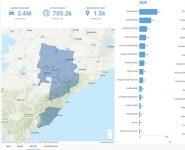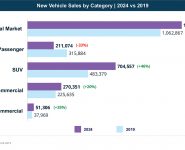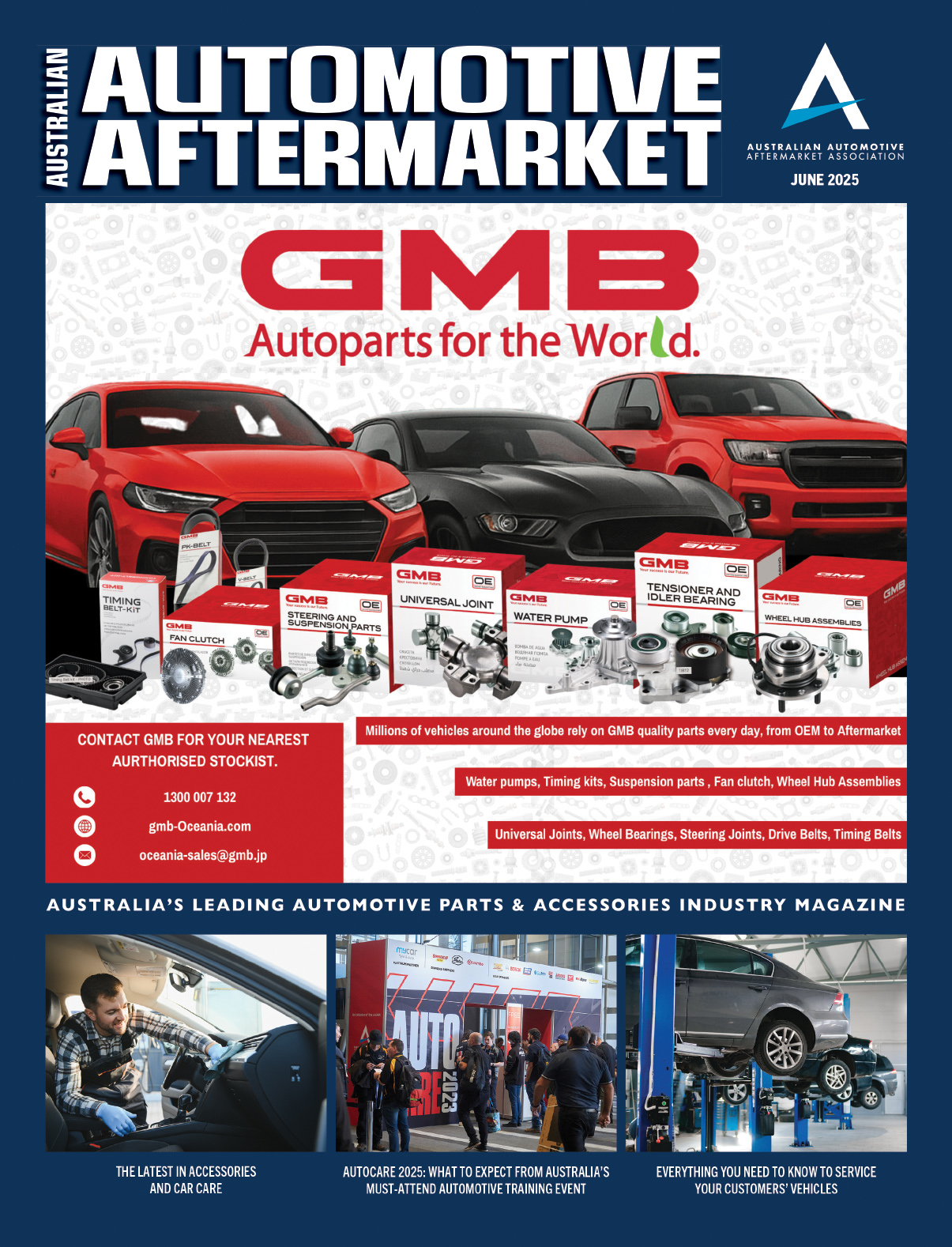THE CHANGING FACE OF HOW AUSTRALIANS TRAVEL
In this article, Fifth Quadrant takes a look at car usage post the pandemic
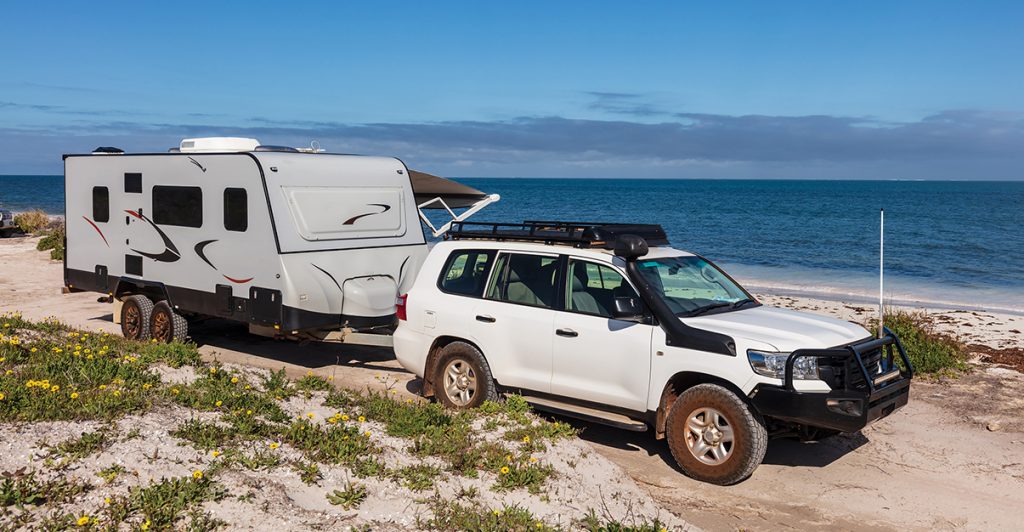
The COVID-19 pandemic has left its mark on many aspects of our lives, with travel one of the most significantly impacted areas.
Whether we’re talking about the daily commute to work, interstate road trips, or a quick run down to the shops, Australians were forced to adapt their behaviour to comply with social distancing regulations.
What has happened since the end of the pandemic though? With consumers now able to move more freely at a local, national, and international level, what has that meant for usage of cars and other forms of transport?
It is not overly surprising that air travel and passenger vehicles were significantly impacted for the average Australian through COVID-19.
When we examine travel patterns more closely though, we observe some intriguing trends.
While both passenger vehicle and air transport were well down in 2019-2020, passenger car usage dipped further as we transitioned out of the pandemic, with Australians driving 30 billion less kilometres compared to 2017.
On the other hand, air travel initially suffered a substantial decline, but is now gradually rebounding.
This demonstrates that while the pandemic reshaped how Australians move around, some modes of transportation are adapting and recovering more swiftly than others.
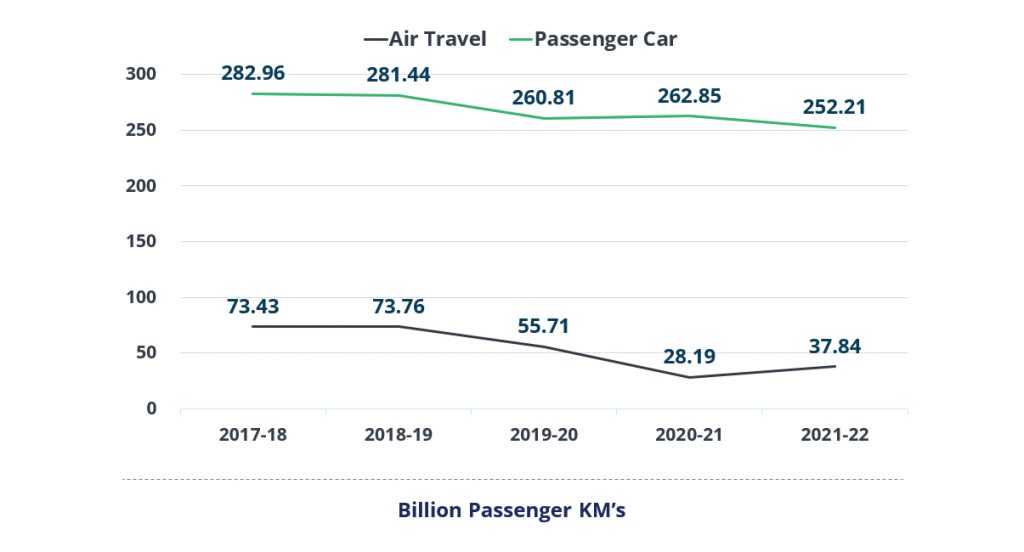
Commuting behaviours can help us understand the declining passenger vehicle usage in more detail.
Key here is the substantial surge in remote work, up 400 percent between 2016 and 2021.
This directly aligns with falling usage of the two most popular modes of commuting transportation – passenger cars and public transport.
They had both seen solid growth over the preceding decade, but then fell away between 2016 and 2021 as working remotely became viable for many Australians.
Taking a step back from everyday travel and commuting, one of the bigger impacts COVID-19 had on travel was the substantial decline in interstate travel.
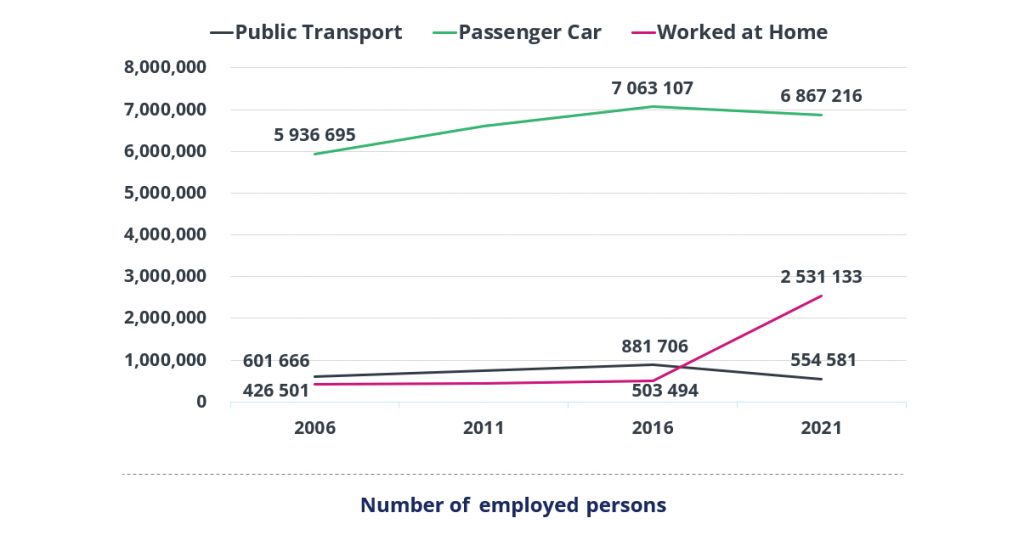
The Sydney to Melbourne route is the fourth busiest flight path in the world, but it took a significant hit during the pandemic, with passenger volumes dropping over 80 percent from 2017 to 2020.
If we again however look beyond the end of the pandemic, we can see a level of recovery, with a 109 percent increase in passenger movements between 2020 and 2022 as the domestic aviation industry began its recovery.
While this is a positive step, current volumes are less than 40 percent of the pre-pandemic peak, showing how much ground is still left to make up.
This suggests that many trips have been replaced by either virtual communications (in the case of business travel) or local holidays/staycations (for leisure travel).
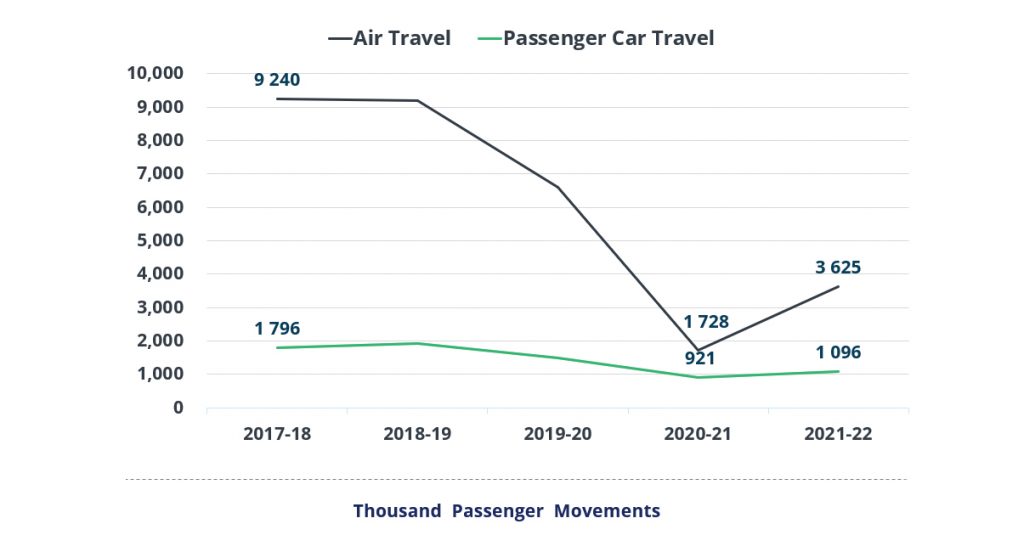
In summary, the COVID-19 pandemic has had a profound impact on transportation in Australia.
While air travel suffered the most significant blow during the pandemic, it is more effectively recovering off the back of eased travel restrictions, and a return to ‘normality.’
In contrast, passenger car usage, both for daily trips and commuting, experienced a substantial decline, and the data indicates a much slower recovery (despite Australia being on track for a record new vehicle sales result in 2023).
But how does this impact the aftermarket? Reduced vehicle usage, coupled with the current cost of living pressure, is likely leading to consumers postponing non-essential services.
On the other hand, there is potentially an opportunity for workshops to support people in the lead-up to holiday road trips by offering pre-trip check-ups.
Either way, it is important for workshop operators to understand the needs of their customers, and how they can best work with them to deliver reliable, cost-effective services.
This column was prepared for AAAA Magazine by Fifth Quadrant, the AAAA’s partners in the AAAA Aftermarket Dashboard which is delivered to AAAA members each quarter.
For more information about their services, visit www.fifthquadrant.com.au or contact Ben Selwyn on ben@fifthquadrant.com.au


